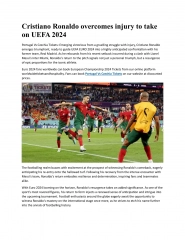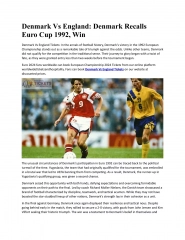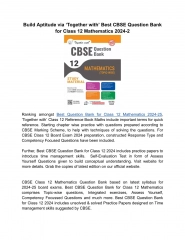
Understanding Tonometry: Importance in Managing Glaucoma and Eye Health
Tonometry is a crucial diagnostic test for measuring intraocular pressure in the eye, essential for managing conditions like glaucoma. This article delves into the significance of monitoring intraocular pressure, risks associated with elevated pressure, different tonometry methods, and the importance of regular eye pressure checks for overall eye health.
Download Presentation

Please find below an Image/Link to download the presentation.
The content on the website is provided AS IS for your information and personal use only. It may not be sold, licensed, or shared on other websites without obtaining consent from the author. If you encounter any issues during the download, it is possible that the publisher has removed the file from their server.
You are allowed to download the files provided on this website for personal or commercial use, subject to the condition that they are used lawfully. All files are the property of their respective owners.
The content on the website is provided AS IS for your information and personal use only. It may not be sold, licensed, or shared on other websites without obtaining consent from the author.
E N D
Presentation Transcript
2 Introduction
/ . Tonometry involves diagnostic testing to measure the pressure inside the eye or intraocular pressure (IOP). Glaucoma is a silent disease that causes blindness if not Introduction treated. IOP must be monitored periodically during the management of patients with glaucoma, ocular hypertension (OHT), and subjects at risk of developing glaucoma. 3
/ . Eye pressure also called intraocular pressure or IOP Intraocular pressure (IOP) is the fluid pressure inside the eye, IOP is a measurement involving the magnitude of the force Intraocular Pressure exerted by the aqueous humor on the internal surface area of the anterior eye. 4
/ . Elevated intraocular pressure (IOP) is a major risk factor for the development and progression of glaucoma. Pressures of between 10 and 20 mmHg are considered normal Intraocular Pressure 5
/ . often implicated in the development of pathologies such as glaucoma optic nerve damage visual field changes Risk Factors retinal detachment External stress 6
/ . Non-contact tonometry : it means don't touch patient's eye (cornea),no need for topical anesthesia. Digital tonometry ( palpation method ) Air puff tonometry Diagnosis Contact tonometry : it means touch patient's eye (cornea),so need topical anesthesia. Goldman tonometry Perkins tonometry Dynamic contour tonometry Electronic Schiotz tonometer 7
/ . Intraocular pressure (IOP) is estimated by response of eye to pressure applied by finger pulp. Digital tonometry ( palpation method ) 8
/ . The technique for digital palpation is as follows: The patient closes his/her eyes and looks downward. Using the index finger of both hands, the examiner gently applies pressure to the superior part of Procedure closed lids alternately, to estimate the force required to indent the orbital wall. If the IOP is raised > fluctuation produced is feeble or absent and the eyeball feels firm to hard. If the IOP is very low > eye feels soft like a partially filled balloon. 9
/ . Air-puff tonometry is an applanation method using a standardized puff of air to flatten the cornea. This method has the advantage that no topical anesthetic or risk of corneal abrasion is involved Air-puff tonometry 10
/ . ADVANTAGES Screening procedure Can be operated by non-medical personnel Advantages & No anesthetic required Disadvantages No direct contact between instrument & eye Disadvantages IOP is near normal accuracy decreases with increase in IOP in eyes with abnormal cornea/poor fixation. 11
/ . Goldman tonometry measures IOP by providing a force that flattens the cornea over a circular area of 3.06 mm with the help of topical anesthetic and fluorescein dye, which are instilled in Goldman tonometry the tear film to outline the area of flattening. 12
/ . Topical anesthesia maintaining tear film with fluorescein. The cornea and biprisms are illuminated with cobalt blue light. Biprism just touches the apex of the cornea. At this point, two fluorescent semicircles are viewed through a Procedure prism. The application force against the cornea is adjusted until the inner edges of two semicircles just touch. 13
/ . Readings High intraocular pressure High intraocular pressure will result in this image. will result in this image. - - Turn the calibrated dial on the tonometer backwards to reach the accurate end point. Low intraocular pressure Low intraocular pressure will result in this image. will result in this image. - Turn the calibrated dial on the tonometer forwards to reach the accurate end point. This is the correct end This is the correct end point point the inner edges of the semi-circles are just touching. This will give an accurate reading of intraocular pressure. 14
/ . Advantages Safe, easy to perform Most accurate Advantages & Not much force is applied to the cornea. Disadvantages Does not get affected by corneal-scleral rigidity Readings are directly from the knob. Can be done on post-cases or injury cases Disadvantages Need slit lamp, dark room, fluorescein and topical anesthesia 15
/ . An inadequate amount of fluorescein can lead to inaccurate readings. occurs if prism not dried after cleaning Sources of Error Tear film thickness can also affect accuracy. central corneal thickness and corneal curvature, Corneal edema can affect the accuracy of tonometry 16
/ . Active Infection Patients with recurrent corneal erosions Corneal abrasions that are not totally healed Contraindications 17
/ . - Perkins tonometer: The Perkins tonometer is similar to the Goldmann tonometer, except that it is portable and counterbalanced, so it can be used in any position. Perkins tonometer 18
/ . Sterile probe is propelled forward into the cornea by a solenoid; the time taken for the probe to return to its resting position and the characteristics of the Procedure rebound motion are indicative of the IOP and also the biomechanical properties of the cornea) Time taken for the probe to return to its resting position is longer in eyes with lower IOP and faster in eyes with higher IOP. 19
/ . Its advantages are that it is portable, can be used on domiciliary (home) visits and being hand-held may be used Advantages & with the patient either sitting up or lying down. some patients are less apprehensive with this technique. Disadvantages Its disadvantages include that it is less stable, has a fixed low magnification , does not allow for efficiently examining the cornea. 20
/ . The dynamic contour tonometer represents a new technology for non-invasive and direct intraocular pressure (IOP) measurement, and has been proposed to accurately measure the Dynamic Contour true IOP irrespective of the corneal thickness. This device is also capable of measuring the ocular pulse amplitude, has significance Tonometer in the diagnosis and management of glaucoma. 21
/ . Electronic Schiotz tonometer : is an instrument for measuring the intraocular pressure (IOP). its ease of use and relative low cost. Before using it, you must Electronic Schiotz apply a topical anesthetic to the cornea. Tonometer 22
/ . The patient should be anesthetized with 4% lignocaine or 0.5% proparacaine. With the patient in supine position, looking up at a fixation target while the examiner separates the lids and lowers the tonometer plate to rest on the anesthetized cornea, the plunger is free to move vertically. The scale reading is measured. The 5.3 gm weight is initially used. If the scale reading is 4 or less, additional weight is added to the plunger. The IOP measurement is repeated until three consecutive readings agree within 0.5 scale units. The conversion table is used to derive OP in mm lg from scale reading and plunger weight. Procedure 23
/ . Advantages it is inexpensive simple to use durable Advantages & requires little maintenance Disadvantages does not have electronics does not require batteries can be stored for years between uses. Disadvantages does not make as precise measurements as other types of tonometer's 24






















